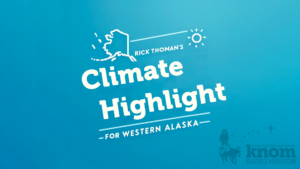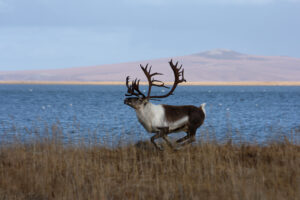A new scientific paper released in May highlights a crucial disconnect between the needs of rural communities in the north Bering Sea and the resources available to them. The study, led by James E. Overland from NOAA’s Pacific Marine Environmental Laboratory, details significant ecological and human impacts from diminished sea ice, emphasizing the gap in support for communities reliant on the environment for their livelihoods.
“Our goal is to tie climate-scale meteorology to regional physics and ecosystem changes and demonstrate a few resulting impacts to which regional peoples are having to respond in the Alaskan Bering Strait region,” the authors wrote in the paper’s abstract.
Key findings of the study include the northward migration of large-bodied, predatory fish species and a decline in zooplankton species, which have disrupted the food web. The region has also experienced an unusual mortality event among ice seals and seven consecutive years of seabird die-offs. On top of that, in 2022 the region was home to the largest, most persistent, and toxic harmful algal bloom (HAB) event ever documented nationwide.
The study also highlights increased industrial ship traffic and the planned expansion of the Port of Nome, further complicating the region’s environmental landscape.
Projections suggest an increasing frequency of low sea ice years, with continued ecosystem and industrial transitions expected to exacerbate economic and food security concerns for the 16 coastal communities in the Bering Strait region.
Bridging the Gap
The paper notes that rural communities in the Bering Strait are oftentimes the first to discover and report anomalous events and typically rely on volunteers using personal resources. The paper highlights a crucial disconnect and gap in resources, underserving a region that relies on its environment for economic and subsistence purposes.
“Federal managers and researchers of the Bering Strait marine resources are typically located in urban hubs at least 500 miles from their coastal constituents, making communications and public service more difficult and infrequent."
- Excerpt from "Transformative Ecological and Human Impacts from Diminished Sea Ice in the Northern Bering Sea"
The paper also highlights the need for additional regulatory response resources to address the rapidly changing environmental conditions. These include infrastructure for food safety testing, routine surveillance and monitoring of marine resources, and collaborative education and outreach between regulators and their coastal constituents.
“We need to integrate our efforts to provide much-needed services to constituents adapting to a transforming ecosystem,” the paper concludes.
As the climate continues to warm the north Bering Sea’s future remains uncertain, with profound implications for both the environment and the people who depend on it.





